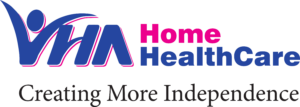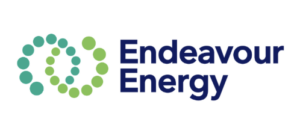ServiceNow

- Case Study 1
- Case Study 2
- Case Study 3
- Case Study 4
- Case Study 5

Implementing Secure Travel Device Request and Management System
In today’s globally connected environment, cybersecurity risks are heightened during international travel, especially when staff handle highly protected data. To address this challenge, our organization has initiated a Secure Travel Device Request and Management System. This case study outlines the objective, implementation process, and anticipated benefits of this project.
Objective The primary objective of this project is to enhance our existing processes and implement new capabilities for:
- Request, Provision, and Management of Secure Travel Devices: Ensure that travel devices are requested, provisioned, and managed efficiently, including maintaining accurate asset data.
- Continuous Improvement Through User Feedback: Identify opportunities for continuous improvement by collecting user feedback on security risks and overall service performance.
- Dashboard and Reporting Capabilities: Enable the Fulfillment team to monitor requests through a comprehensive dashboard and reporting system.
Project Overview: We are currently working on a Cybersecurity project focused on securing travel devices for high-risk overseas travel. The project aims to provide approximately 50 secure travel devices to staff, ensuring that highly protected data remains safe from malicious actors and threats.

Implementation Process
1. Secure Travel Device: Request A Service Catalog Form will be created to facilitate the request for secure travel devices. This form will be integrated into our existing IT service management system to streamline the request process.
2. Provisioning and Management: Once a request is submitted, the following steps will be taken:
Approval Workflow: The request will go through an approval process involving the Cybersecurity and IT departments.
Device Provisioning: Approved requests will trigger the provisioning of secure travel devices, ensuring that each device is configured with necessary security measures.
Asset Registration: The devices will be registered in an Asset Register, which can be managed using an existing Configuration Management Database (CMDB) table or a new table created from the base CMDB table.
3. Asset Management: The Cyber SecOps Team will manage the travel devices using the Asset Register. This will include:
Tracking Device Location: Monitoring the location and status of each device.
Maintenance and Updates: Ensuring that devices receive regular security updates and maintenance.
Decommissioning: Properly decommissioning and wiping devices when they are no longer in use.
4. Continuous Improvement: To identify opportunities for continuous improvement, we will collect user feedback on:
Security Risks: Identifying any security risks encountered during travel.
Service Performance: Gathering feedback on the overall performance of the secure travel device service.
- Dashboard and Reporting: A dashboard and reporting capability will be developed for the Fulfillment team to monitor requests. This will include:
Real-Time Monitoring: Tracking the status of requests in real-time.
Performance Metrics: Analyzing key performance indicators (KPIs) related to request fulfillment and device management.
User Feedback Integration: Incorporating user feedback into reports to drive continuous improvement.

Anticipated Benefits
The implementation of the Secure Travel Device Request and Management System is expected to provide several benefits:
- Enhanced Security: By providing secure travel devices, we can significantly reduce the risk of data breaches during international travel.
- Streamlined Processes: Automating the request and provisioning process will improve efficiency and reduce manual workload.
- Improved Asset Management: A centralized Asset Register will enable better tracking and management of travel devices.
- Continuous Improvement: Collecting user feedback will help identify areas for improvement, ensuring that the service evolves to meet emerging security challenges.
- Better Monitoring and Reporting: The dashboard and reporting capabilities will provide valuable insights into the performance of the secure travel device service, facilitating informed decision-making.
Conclusion
The Secure Travel Device Request and Management System represents a significant step forward in enhancing our organization’s cybersecurity posture. By streamlining processes, improving asset management, and leveraging user feedback, we aim to provide a robust and efficient service that safeguards our critical data during high-risk international travel. This case study serves as a blueprint for other organizations looking to implement similar initiatives, highlighting the importance of proactive cybersecurity measures in today’s interconnected world.
About TechBubble:
TechBubble is a leading provider of IT and business transformation solutions using ServiceNow, specializing in ITSM, ITOM, PPM, CSM, Integration and Custom Apps implementations. With a proven track record of enabling operational excellence, TechBubble empowers clients to achieve their strategic goals.

Integration of ServiceNow with SailPoint
In the realm of IT service management and cybersecurity, integrating various tools and platforms can significantly enhance operational efficiency and security. This case study delves into the collaborative effort between TechBubble and University’s teams to integrate ServiceNow with SailPoint, focusing on Privileged Access Management (PAM) for virtual instances and Unibuy access management.
Project Overview
The project aimed to streamline and secure the access management process for virtual instances and Unibuy through the integration of ServiceNow and SailPoint. The project involved the following key components:
- ServiceNow – SailPoint Integration: Enabling seamless communication and data flow between the two platforms.
- Unibuy Access Management: Focusing on controlling access to the Unibuy system.
- Virtual Instance Access Management: Focusing on controlling access to virtual instances through the PAM system.

Objectives
The primary objectives of the project were to:
- Automate Access Request and Approval Process: Streamline the process of raising, approving, and fulfilling access requests.
- Enhance Security: Ensure secure and compliant access to critical systems.
- Improve Operational Efficiency: Reduce manual intervention and potential errors in the access management process.

Implementation Process
1. Integration of ServiceNow with SailPoint: The integration between ServiceNow and SailPoint was crucial for automating the access management process. The integration involved:
Request Initiation: Access requests were initiated via SailPoint.
Request Tracking: Requests were tracked using RITM (Request Item) in ServiceNow. Approval Workflow: The approval process was managed within ServiceNow. Provisioning: Post-approval, the information was sent back to SailPoint, which handled the provisioning and fulfillment of the request.
2. Unibuy Access Management: TechBubble team focused on managing access to the Unibuy system. This involved:
Defining Access Policies: Establishing policies for who can access Unibuy and under what conditions.
Automation of Access Requests: Integrating the access request process with SailPoint and ServiceNow to automate approvals and provisioning.
3. Privileged Access Management (PAM): TechBubble team worked on the PAM system for virtual instances. This involved:
Setting Up PAM Policies: Defining policies for privileged access to virtual instances. Automating Access Management: Using SailPoint to raise access requests, track them in ServiceNow, manage approvals, and handle provisioning.
SailPoint for Service Desk: The integration leveraged the capabilities of SailPoint for the Service Desk, details of which can be found on the ServiceNow Store.

Results and Benefits
The integration project yielded several significant benefits:
- Enhanced Security: By automating the access management process, the project ensured that only authorized personnel could access critical systems, reducing the risk of unauthorized access and potential security breaches.
- Operational Efficiency: The automated workflow reduced the need for manual intervention, speeding up the access request and approval process and minimizing errors.
- Compliance: The integration helped ensure compliance with internal policies and regulatory requirements by providing a clear audit trail for all access requests and approvals.
- User Satisfaction: The streamlined process improved user satisfaction by reducing the time taken to gain necessary access.
Conclusion
The integration of ServiceNow with SailPoint for Privileged Access Management and Unibuy access management represents a significant advancement in our organization’s IT service management and cybersecurity capabilities. The TechBubble team’s effort has resulted in a more secure, efficient, and user-friendly access management process. This case study serves as an example of how strategic integration projects can deliver substantial benefits, enhancing both security and operational efficiency.
About TechBubble:
TechBubble is a leading provider of IT and business transformation solutions using ServiceNow, specializing in ITSM, ITOM, PPM, CSM, Integration and Custom Apps implementations. With a proven track record of enabling operational excellence, TechBubble empowers clients to achieve their strategic goals.

CMDB Implementation
TechBubble, a leading provider of IT solutions and services, partnered with the VHA Homecare Canada to implement a robust Configuration Management Database (CMDB). The VHA, serving over 2 million citizens annually through a vast network of healthcare facilities, faced significant challenges in managing its sprawling IT infrastructure.
TechBubble’s expertise was pivotal in designing and deploying a scalable CMDB solution tailored to the VHA’s unique needs.
Understanding the Challenge
TechBubble’s initial assessment revealed several pain points:
- Fragmented IT Asset Management:
Each VHA facility managed its IT assets independently, leading to inconsistent records and duplication.
- Operational Inefficiencies:
Diagnosing IT issues and understanding system interdependencies were time-consuming, impacting service delivery.
- Compliance Vulnerabilities:
Incomplete and outdated asset records posed a risk for federal audits and regulatory compliance.
- Diverse Stakeholder Expectations:
Balancing the needs of clinicians, IT staff, and administrators required careful alignment.

TechBubble’s Approach
1. Strategic Planning and Stakeholder Engagement
TechBubble facilitated workshops and discovery sessions with VHA stakeholders to:
- Map out existing processes and challenges.
- Define the goals of the CMDB implementation.
- Ensure alignment across clinical, administrative, and IT teams.
2. Selecting the Right Platform
After evaluating several tools, TechBubble recommended ServiceNow as the CMDB platform for its scalability, integration capabilities, and user-friendly interface.
3. Data-Driven Implementation
TechBubble prioritized a structured data approach:
- Automated Discovery: Leveraged discovery tools to inventory IT assets and capture dependencies.
- Data Cleansing: Addressed inconsistencies and enriched existing records.
- Standardization: Developed data governance policies to maintain accuracy.
4. Seamless Integration
TechBubble ensured the CMDB was seamlessly integrated with the VHA’s:
- Incident Management Systems.
- Change Management Processes.
- Monitoring and Security Tools.
5. Phased Rollout and Training
To minimize disruption, TechBubble adopted a phased deployment strategy:
- Piloted the CMDB at select facilities to refine the approach.
- Delivered targeted training to IT teams, empowering them to leverage the CMDB effectively.
- Gathered feedback for iterative improvements before full-scale deployment.

Key Outcomes
- Operational Improvements
Faster Incident Resolution: CMDB’s visibility into dependencies reduced issue resolution time by 30%.
Optimized Change Management: Enhanced insights minimized unplanned outages during system updates.
- Regulatory Compliance
The CMDB provided a reliable system of record for audits, ensuring adherence to federal healthcare IT standards.
- Cost Savings
By eliminating duplicate assets and optimizing IT resource allocation, the VHA realized significant cost reductions.
- Scalable Framework
The implemented CMDB now supports future initiatives, including cybersecurity enhancements and cloud adoption strategies.

TechBubble’s Reflections
Lessons Learned
- Stakeholder Collaboration is Essential: Early buy-in and continuous engagement were critical to the project’s success.
- Data Quality is Key: Clean, standardized data sets the foundation for a reliable CMDB.
- Adaptability Wins: TechBubble’s agile methodology allowed for adjustments based on pilot phase feedback.
Innovations Introduced
- Advanced Analytics: Integrated analytics capabilities provided actionable insights for IT operations.
- Custom Dashboards: Tailored dashboards empowered VHA teams to monitor and manage assets efficiently.

Conclusion
TechBubble’s partnership with the VHA resulted in a transformative CMDB implementation that streamlined IT operations, enhanced service delivery, and ensured compliance. This initiative showcases TechBubble’s ability to deliver tailored solutions for complex, large-scale organizations, reinforcing its position as a leader in IT transformation.
About TechBubble:
TechBubble is a leading provider of IT and business transformation solutions using ServiceNow, specializing in ITSM, ITOM, PPM, CSM, Integration and Custom Apps implementations. With a proven track record of enabling operational excellence, TechBubble empowers clients to achieve their strategic goals.

Toyota USA: ITSM and ITBM Implementation
Toyota USA, a leading automotive manufacturer, is renowned for its commitment to innovation and efficiency. However, with a vast and growing IT ecosystem supporting its operations, Toyota USA faced challenges in managing IT services and business operations effectively.
To streamline its processes, improve service delivery, and align IT initiatives with business goals, Toyota USA partnered with TechBubble to implement IT Service Management (ITSM) and IT Business Management (ITBM) solutions. This case study explores TechBubble’s role in transforming Toyota USA’s IT operations.

Challenges at Toyota USA
- Fragmented IT Processes:
- Multiple legacy systems and tools were used for incident, problem, and change management, leading to inefficiencies.
- Lack of a unified platform for IT and business collaboration.
- Limited Visibility into IT Investments:
- Difficulty in tracking IT projects, resources, and expenditures.
- Misalignment of IT efforts with business priorities.
- Operational Silos:
- Poor communication between IT and business units hindered agility.
- Redundant and overlapping processes resulted in wasted resources.
- Demand for Scalability:
- Rapid expansion of IT infrastructure required scalable solutions to support future growth.

TechBubble’s Approach
1. Comprehensive Needs Assessment
TechBubble began by conducting a thorough assessment of Toyota USA’s existing IT environment, involving stakeholders from IT, operations, and business units. Key activities included:
- Mapping current processes and workflows.
- Identifying pain points and inefficiencies.
- Defining success criteria for ITSM and ITBM implementation.
2. Platform Selection and Customization
Based on Toyota USA’s requirements, TechBubble recommended ServiceNow as the unified platform for ITSM and ITBM. Customizations included:
- ITSM Modules: Incident, problem, and change management tailored to Toyota’s workflows.
- ITBM Modules: Demand, project, and portfolio management configured to align IT with business goals.
- Integration with existing tools like SAP and third-party monitoring systems.
3. Data Integration and Migration
- Consolidated data from legacy systems into the new platform.
- Ensured data quality and consistency during migration.
4. Process Standardization and Automation
- Standardized IT processes across departments, reducing redundancy.
- Automated routine tasks like ticket routing and approvals to improve efficiency.
5. Training and Change Management
- Delivered role-specific training to IT staff and business users.
- Created a communication plan to drive adoption and highlight the benefits of ITSM and ITBM.
Outcomes
Operational Efficiency
- Reduced Resolution Times: Automated workflows and streamlined processes cut incident resolution times by 40%.
- Improved Change Management: Centralized change tracking reduced unplanned downtime by 25%.
Enhanced Visibility and Decision-Making
- Comprehensive Dashboards: Provided real-time insights into IT performance and project progress.
- Better Resource Allocation: Clear visibility into IT investments enabled Toyota USA to allocate resources effectively.
Alignment of IT and Business Goals
- ITBM tools facilitated better prioritization of IT projects based on business value.
- Enabled cross-functional collaboration, breaking down operational silos.
Scalability and Future Readiness
- The unified platform provided a scalable foundation to support Toyota USA’s ongoing growth and digital transformation initiatives.
Lessons Learned
- Stakeholder Engagement Drives Success: Early and ongoing involvement of key stakeholders ensured alignment and smooth adoption.
- Customization Balances Standardization: Tailoring the platform to Toyota’s unique needs while maintaining industry best practices was key to success.
- Change Management is Critical: A structured change management strategy minimized resistance and fostered adoption across teams.
Conclusion
TechBubble’s partnership with Toyota USA resulted in a successful ITSM and ITBM implementation, transforming IT operations and aligning them with business objectives. This initiative underscores TechBubble’s expertise in delivering tailored solutions that enable organizations to thrive in a competitive landscape.
About TechBubble:
TechBubble is a leading provider of IT and business transformation solutions using ServiceNow, specializing in ITSM, ITOM, PPM, CSM, Integration and Custom Apps implementations. With a proven track record of enabling operational excellence, TechBubble empowers clients to achieve their strategic goals.

Endeavour Energy: PPM Implementation
Endeavour Energy, one of Australia’s leading electricity distribution networks, serves over 2.7 million people across New South Wales. As the organization faced increased demands to modernize infrastructure, manage capital projects efficiently, and enhance regulatory compliance, Endeavour Energy sought to transform its project management processes.
To address these needs, Endeavour Energy partnered with TechBubble to implement a Project Portfolio Management (PPM) solution. This case study examines the challenges, implementation approach, and outcomes of the initiative.
Challenges at Endeavour Energy
- Fragmented Project Management Processes:
- Reliance on disconnected tools and spreadsheets hindered visibility and collaboration.
- Manual processes led to delays in project tracking and reporting.
- Limited Portfolio Visibility:
- Difficulty in prioritizing and aligning projects with strategic objectives.
- Inconsistent metrics for evaluating project performance and resource utilization.
- Regulatory and Compliance Pressures:
- Increasing requirements for transparency and accountability in project execution.
- Challenges in meeting reporting standards for government and regulatory bodies.
- Scaling for Future Growth:
- The need to accommodate a growing portfolio of infrastructure modernization projects.
TechBubble’s Approach to PPM Implementation
1. Comprehensive Needs Assessment
TechBubble conducted a detailed analysis of Endeavour Energy’s project management environment, focusing on:
- Identifying inefficiencies in existing processes.
- Understanding regulatory reporting requirements.
- Engaging stakeholders to define success criteria.
2. Platform Selection and Customization
TechBubble recommended ServiceNow’s PPM module for its robust capabilities and scalability. The platform was customized to meet Endeavour Energy’s unique needs, including:
- Tailored workflows for capital project approvals.
- Real-time dashboards for tracking project performance and portfolio health.
- Integration with existing ERP and asset management systems.
3. Process Standardization and Optimization
- Streamlined project initiation, execution, and closure processes.
- Implemented standardized templates for project plans and financial reporting.
4. Training and Change Management
- Developed role-specific training programs for project managers, executives, and support staff.
- Established a change management strategy to drive adoption and ensure consistent usage across teams.
5. Phased Rollout
TechBubble adopted a phased deployment approach, starting with pilot projects before scaling to the entire organization.
Outcomes
Enhanced Project Visibility and Control
- Centralized Dashboard: Provided a single source of truth for all project and portfolio data.
- Improved Decision-Making: Enabled leadership to prioritize projects based on ROI and strategic alignment.
Operational Efficiency
- Time Savings: Automated workflows reduced administrative tasks, saving project managers significant time.
- Faster Approvals: Digitized processes accelerated project approvals and resource allocation.
Regulatory Compliance
- Accurate Reporting: Automated reporting features ensured compliance with regulatory standards.
- Audit Readiness: Centralized records simplified audits and demonstrated accountability.
Scalability for Future Growth
- The PPM solution provided a scalable framework to support Endeavour Energy’s expanding infrastructure programs.
Lessons Learned
- Stakeholder Involvement is Crucial: Early engagement with project managers, executives, and regulatory teams ensured alignment and buy-in.
- Data Accuracy is Key: Accurate data during migration was essential for reliable reporting and decision-making.
- Phased Rollouts Minimize Risk: Starting with pilot projects allowed for iterative improvements before full-scale deployment.

Conclusion
TechBubble’s collaboration with Endeavour Energy successfully modernized the organization’s project management processes. By implementing a robust PPM solution, Endeavour Energy achieved greater visibility, efficiency, and regulatory compliance, positioning itself to meet future demands and continue delivering reliable electricity to its customers.
About TechBubble:
TechBubble is a leading provider of IT and business transformation solutions using ServiceNow, specializing in ITSM, ITOM, PPM, CSM, Integration and Custom Apps implementations. With a proven track record of enabling operational excellence, TechBubble empowers clients to achieve their strategic goals.

